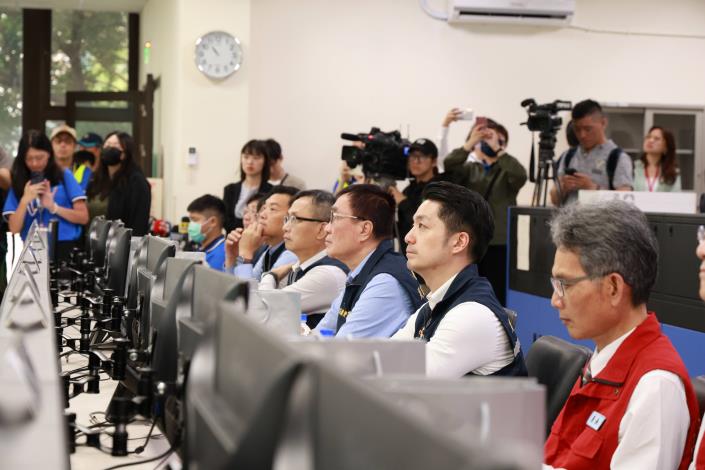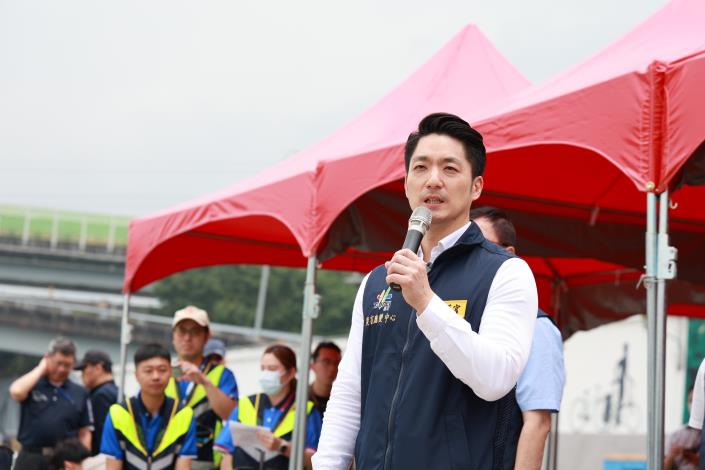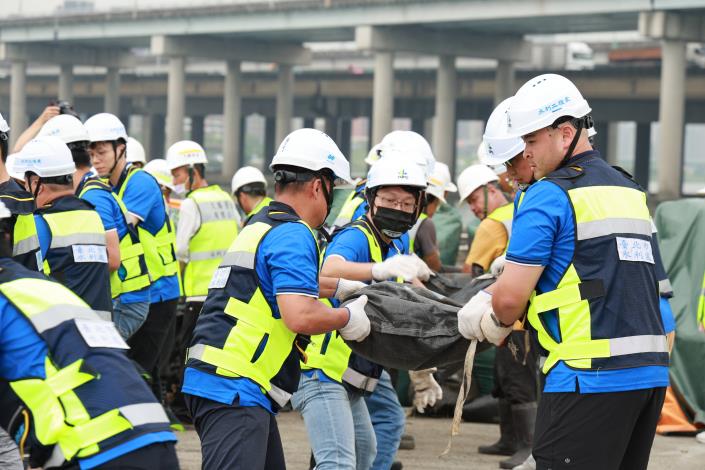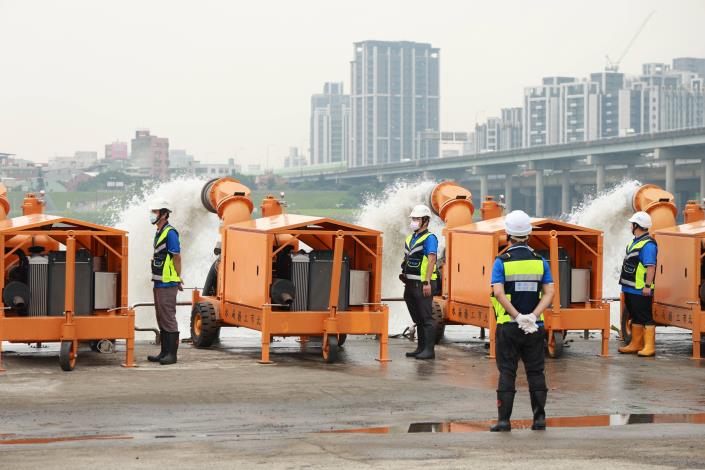Mayor observes flood control drill in Taipei City
Recently, some fronts have already swept through the northern part of the city, resulting in significant rainfall. In anticipation of the flood control period starting May 1, Taipei Mayor Chiang Wan-an went to the 4th Region Management Center of the Pumping Station, the 6th Evacuation Gate of the Tamsui River, and the Dunhuang Pier to preside over flood control and rescue drills this morning (23rd). The Water Resources Department announced that the city has constructed the nation’s sole automated remote monitoring system for pumping stations. This system can activate the pumping machine automatically based on the water level, without human control. Additionally, the city’s 88 rainwater pumping stations are divided into six regional management centers based on the river system, area, and operational features. These centers can remotely control the pumping station to pump water under their jurisdiction. The Mayor, after listening to the report on flood control preparations, also randomly tested the remote pumping orders issued by the 4th district management center of the pumping station. This test activated the relevant equipment of the Dihua pumping station and pumped water. The pumping operation functioned normally, which ensured that the operation of the pumping station would be smooth and safe during the typhoon and flooding season. Water Resources Department River Engineering Division said that this time, in addition to automatically operating the pumping station drills, the Danshui River No. 6 evacuation gate and Dunhuang Wharf will have military drills which include: embankment gap blocking exercise, evacuation gate opening and closing operation exercise, mobile pumping machine operation exercise, mobile baffle erection exercise, and so on. The Department of Water Resources also continues to provide a diversified water information service interface. Through the “Lian Water Green Taipei Water Resources” LINE official account, you can click on the main page of the account for “Water Information Search Service,” which includes the following functions: rainfall, river level, storm sewer level, pumping station status, and inundation point inquiries. This service helps the public to quickly obtain information about the water situation and make quick contingency measures. The Mayor particularly highlighted that any typhoon or heavy rainfall event may cause loss of life and property. Only by adhering to the disaster prevention rather than disaster relief spirit, through regular and solid training, strengthening the various contingency actions, promoting the participation of the community in independent disaster prevention, and raising the awareness of residents, campus teachers and students in disaster prevention, can we work together in public and private collaboration to minimize the damage, so that the public can live and work in peace and contentment, and their lives and property can be better protected.





![Taiwan.gov.tw [ open a new window]](/images/egov.png)
